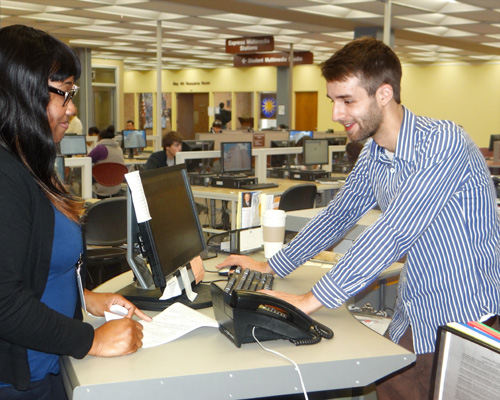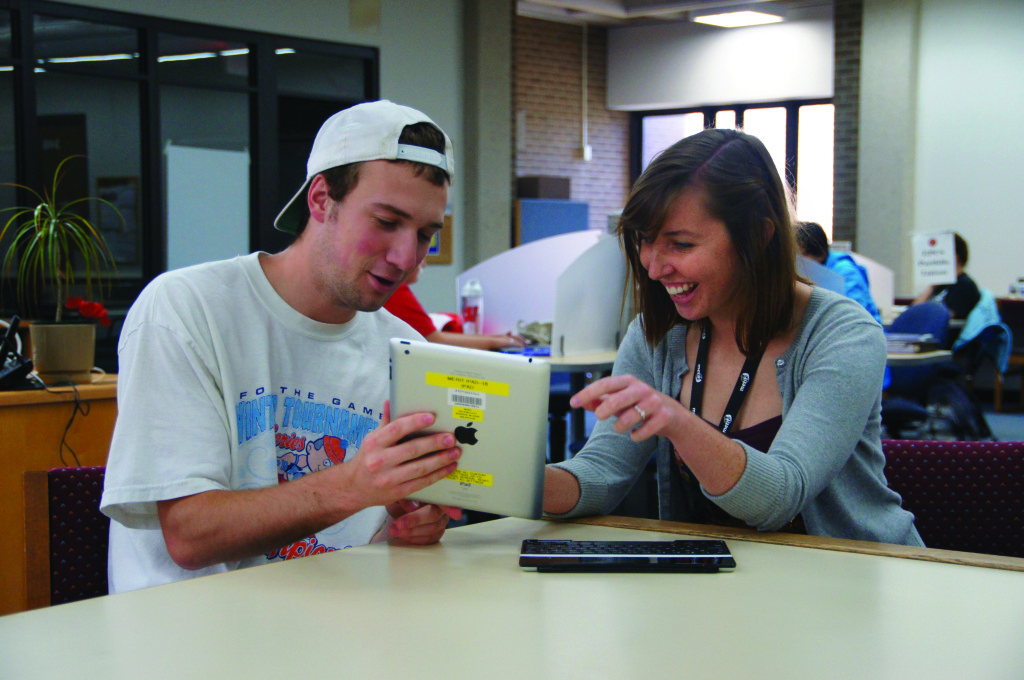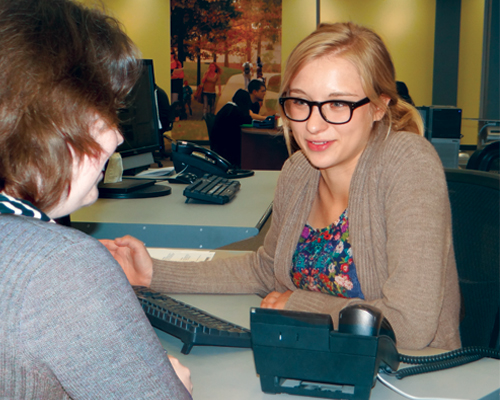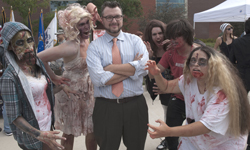
As states continue to report decreases in library funding, budget cuts remain a persistent issue in libraries. The situation demands that library schools produce well-educated students with real-world experience who can work within today’s constraints. In 2011, libraries across the country saw devastating losses of funding. Nine percent of the Library of Congress’s budget was cut, which resulted in losing 10% of its workforce.
Due to loss of funding over the years, many libraries opted to hire less expensive staff members who were not certified librarians. Now, even though people with the title “librarian” make up one-third of library staff, only half of all libraries reported having a credentialed librarian on staff in 2010, according to the Public Libraries in the United States Survey published in 2013 by IMLS. While libraries have been dealing with budget constraints for decades, these cuts mean LIS programs across the country—such as those at the University of South Carolina (USC) and the University of Wisconsin–Madison (UW)—are seeing a drop in the speed of placement rates post-graduation.
USC’s library program has a job placement rate of 95% within six months of graduation, but that rate used to be 95% within six weeks. Although lower than it once was, the placement percentage is able to remain high due to decreased incoming class sizes. The university’s library program cut back in an effort to avoid flooding the workforce with too many new graduates entering the job market.
The decrease in graduates landing jobs makes workforce preparation more valuable than ever before. In order to compete in the library job market, applicants must have work experience in addition to their degrees. In many programs, academic libraries play a large role in providing their universities’ LIS students with real-world experience and training.
Working in academic libraries

The LIS program at the University of Illinois at Urbana-Champaign (UIUC) has a strong relationship with its university libraries. Recent graduate Lauren Chenevert, youth services librarian at Hennepin County (Minn.) Library, credits this relationship with allowing her to gain work experience through an hourly position at the UIUC’s Center for Children’s Books, without which she may not have qualified for her current position. “In libraries, if you don’t have work experience, forget it,” Chenevert says. “I can attribute the fact that I got the job that I have now to that work experience.”
Much like UIUC, the academic libraries at Kent State University (KSU), USC, and the University of Texas at Austin (UT) employ some LIS students as graduate assistants or hourly paid student workers. During an average semester, nearly 40 graduate research assistant positions are available at UT’s School of Information. Available positions are spread over several departments, from the reference desk to the historical music recordings collection in the Fine Art Library. At USC, library students are given preference over law, medical, or any other student applicant for internships in the university’s libraries. In fact, many of the academic librarians at USC are alumni of its SLIS program.
Gaining practical skills
Donald Wicks, associate professor at KSU’s SLIS program and director of the Center for the Study of Information and Religion, said that one could argue that recent funding cuts have increased LIS students’ involvement with KSU’s academic libraries as work experience becomes more critical to landing a job. Student workers have a hand in all parts of the campus library system including reference, cataloging, and special collections. LIS and library faculty members sometimes work on research projects together, and these, too, may involve a student research assistant. A few of KSU’s library faculty members have taught as adjuncts in the LIS program, and several volunteer as guest speakers.
Academic librarians also speak as guests in courses at UW’s School of Library and Information Studies. Associate Director Michele Besant says, “The academic librarians on campus, in the city, around the state—and increasingly beyond—are partners with us.”
UW requires its students to complete a 120-hour practicum before graduating from its library program. Many academic librarians work as practicum supervisors. Students interested in an instruction-based field may choose a field project in library and information literacy instruction, where they partner with campus instruction librarians for a semester, getting hands-on experience in the working world. For younger students who may not have much, if any, experience, it’s a great way to beef up résumés, gain workplace skills, and make connections with potential references. “It is a reality check about an environment,” says Besant. “It offers them the ability to show potential employers they have experience doing X.”
Positions at academic libraries aren’t the only roles helping LIS students prepare for the working world. At the University of Denver (DU), while the academic libraries don’t play a particularly large role in prepping LIS students for the workforce, students must either complete a 100-hour practicum or a capstone project that is similar to a thesis. “Historically speaking, students who have little practical experience should pursue the practicum to gain that needed exposure,” says Katie Yashiro, a recent MLIS graduate from DU’s Morgridge College of Education.
For those pursuing online degrees, involvement with academic libraries can be scarce. Chenevert pointed out that online students may be missing opportunities to gain practical experience in their own academic libraries as she did. At KSU, this problem is being addressed somewhat. Many online courses use library staff as guests or as adjunct instructors, featuring them in video tours or recorded interviews. One of the most popular online sessions is a course Wicks teaches on collection development. He has a librarian provide information about her own experience in collection development and answer students’ questions. “This guest does a wonderful job and sparks considerable interest, making the practice of librarianship come alive for students,” Wicks says. “So, even in an online environment, the practice of librarianship can be made real for students.”
Even with the many tools, work experience, and networking opportunities most library programs offer, in many cases recent library grads must adjust their expectations in the competitive job market of the library workforce. Applicants have to send out more applications than ever before and location flexibility will increase their job-placement odds. Students must actively begin searching for postgraduate work while still in school, expecting that it will likely take several months to land a job. Their career starting point may be different than what they hoped or even expected. “Within the academic library community, we feel the greatest opportunities will be for new professionals who can combine technical skills with a real understanding of user experience and design,” says Andrew Dillon, dean of UT’s School of Information. “Naturally, graduates who have this combination of skills can find work in many areas, not just academic libraries.”
New workforce expectations

Carole Palmer, professor and director of the Center for Informatics Research in Science and Scholarship at UIUC’s GSLIS program, agreed that there are new expectations for librarians to have solid digital skills. Despite budget cuts in libraries, she stressed that the skills of librarians are still very much in demand. Librarians are now needed to curate not just publications, but are also increasingly responsible for curating research data as supplementary materials or important digital objects in their own right. Samantha Hastings, director and professor at USC’s SLIS, believes these new demands have added value to students’ tools. “We add more tech skills to portfolios so they can be stellar reference librarians but also know how to build and maintain a website,” Hastings says.
UIUC GSLIS graduates who specialized in data curation have taken on new roles at libraries across the country. Some of these recently developed roles include digital project coordinators, data management consultants, data curators, and digital curation librarians. “Despite cutbacks, newer areas are growing,” Palmer says. “Our programs are designed to have our students step into those positions as leaders.”
The changing industry has become more demanding in terms of technology advancement, but library expectations are broadening in other ways, too. New librarians need to have planning, evaluation, advocacy, and developmental work skills. “You have to be comfortable and even excited to be in an environment of rapid change,” Besant says. “You have to be willing to constantly be in a learning mode. You have to be comfortable trying things, failing, and moving on fast.”


